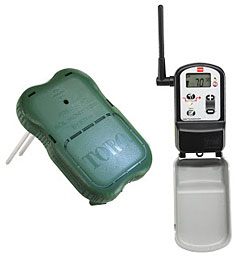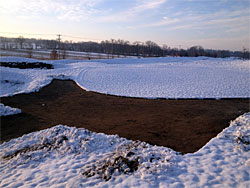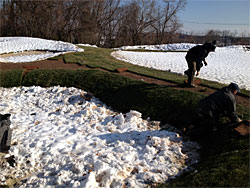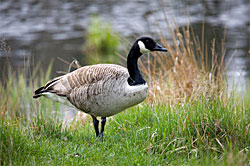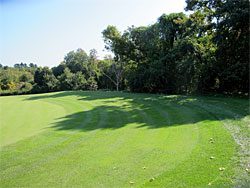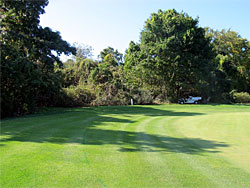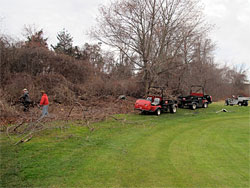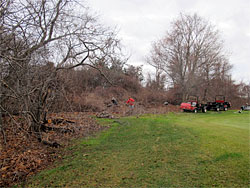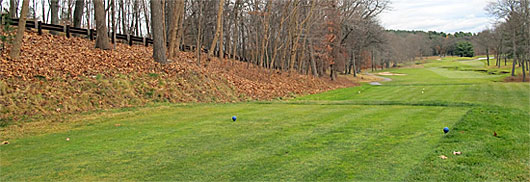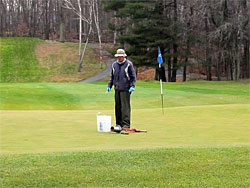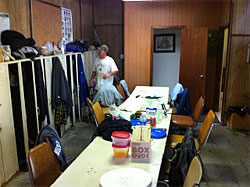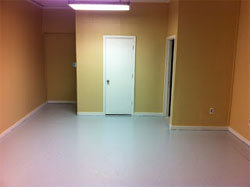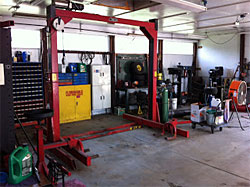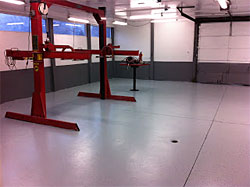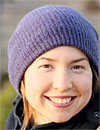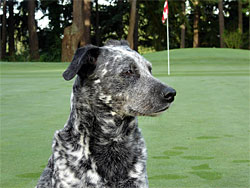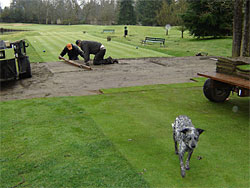|
 |
December 11, 2012 |
|
A Gift That Will Definitely Pay For Itself... John Slade, Laurel Creek Country Club, Mt. Laurel, NJ:
 "As we head towards the holidays, you're probably thinking more about snow than about watering your lawn. However, if you want to get a jump on things for next year, you really should check out this gadget from Toro. This device is called the Xtra Smart Precision Soil Moisture Sensor, and it has the potential to significantly reduce the amount of water you use to irrigate your lawn.
Think about it: traditionally, rain sensors are placed up high where your irrigation water won't trigger them. So, once the rain sensor allows the system to start running again, it will keep going on your programmed days until the next rain event. In contrast, with the Xtra Smart Sensor placed in an irrigated area of your lawn, it will prevent the system from running until the soil moisture conditions indicate you need irrigation. Only when the sensor indicates water is needed, will the irrigation controller then be allowed to water. |
 |
|
Wrapping up the Greens for the year! Donald Cross, CGCS, Skokie Country Club, Glencoe, IL:  "With Christmas and the traditional annual wrapping that occurs during this time of year just around the corner, we're beginning a different kind of wrapping on the course, that is Greens Covering. Yes, the time has come to 'put the greens to bed for a long winter's nap'! This practice, that we've done for 23 years now, is happening a few days ahead of normal, but with the forecast indicating cold settling in next week, now is now the right time.
The covers we use (permeable) certainly do not solve all potential winter issues. They are porous and so will allow water (from rain or snow melt) to infiltrate and this can of course freeze. So they do not prevent ice damage issues should environmental conditions become favorable for ice accumulation. They do not prevent winter snow mold diseases such as Microdochium Patch or Typhula Blight (Pink and Gray Snow Mold) and other potential winter diseases.
They also require a good bit of manpower to install in early winter and then again in spring when we may have years where we have to perform what I call 'The Cover Shuffle'. This is when the warm days in spring may come sporadically and briefly and are then followed by sharp temperatures drops. We have to manage the temperatures so as to not let too much early spring growth to occur too soon, and also not uncover them too early and cause a fallback in the progress (enhanced growth, greening) made to that point. Therefore we may pull them off for brief periods, then put them back on if temperatures so dictate and this 'Cover Shuffle' may happen a few times in early spring. Last year was ideal. We pulled them off for the first time on March 13th and we didn't have to recover at all. This was certainly an exception to normal!
Visit Don's blog at skokieturf.blogspot.com. |
 |
|
Bunker Project Update Chris McKernan, RiverCrest Golf Club and Preserve, Phoenixville, PA:
 "We received a little more snow than I was expecting, but that didn't hinder our progress on #5 bunker. Visit Chris's blog at rivercrestgolfclub.blogspot.com. |
 |
|
Geese... Steve Cook, CGCS, Oakland Hills Country Club, Bloomfield Hills, MI:
 "Canada Geese are regulated by the U.S. Fish and Wildlife Service under the guidelines set forth by the Migratory Bird Treaty Act of 1918 making it unlawful to kill, sell, hunt, disturb nests and eggs, or purchase and possess migratory birds unless permitted by the Secretary of the Interior.
|
 |
|
Removing underbrush for playability... Patrick Daly, CGCS, Framingham (MA) Country Club:  "We have been working at removing some underbrush around the course. There are many reasons why this is an ongoing maintenance practice. The brush moves into the playing corridor, decreasing the area that players need to recover from misplayed shots. It also restricts air flow and when composed of vines, can kill desirable trees. The following photos shows some of the work that was completed on 18 and is ongoing on the 14th hole.
We are also doing some additional late season overseeding on the greens. Although the grass will not germinate and grow with the colder temperatures we are experiencing now this seed will germinate under the covers in the early spring and will fill any voids once we remove covers and open the greens next year.
| ||||||||
 |
|
Maintenance Facility Improvements... Scott Rettman, Walnut Creek Country Club, Mt. Laurel, NJ:  "Over the last two weeks the grounds staff completed some excellent maintenance facility upgrades that will improve organization and cleanliness while also setting a strong precedent for future on course maintenance activities. The work was all done in-house with our current staff for little cost. These positive changes will also aid in recruiting strong student interns in years to come by having a nice working environment.
The meeting room floor and shop floor were diamond-ground and thoroughly cleaned followed by the installation of a commercial grade epoxy floor. The walls were repaired where damaged and new drywall was hung. Painting both rooms helped put the finishing touch on the project!"
Visit Scott's blog at wcccturf.blogspot.com. |
 |
|
Year end activities... Jason Hooper, Quilchena Golf Club, Quilchena, BC:
 "Recent drier weather has allowed us to clean up and mulch many of the fallen leaves that litter the course this time of year. This is not an easy task in wet conditions, but they need to be cleaned up and we really can't expect dry weather this time of year. Our Turf Care Team has been reduced down to four crew members on Tuesdays, Wednesdays and Thursdays and only two on Fridays, Saturdays, Sundays and Mondays. This does not include our mechanic and horticulturist. 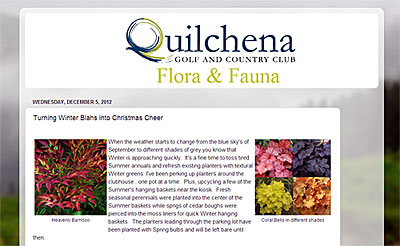 Visit Jason's blog at qgolfclub.blogspot.ca and Jacqui's blog at quilchenaflorafauna.blogspot.ca. |
 |
|
The Lucy... Joel Kachmarek, Tacoma Country and Golf Club, Lakewood, WA:
 "It is impossible to prepare for that inevitable day when you must say goodbye to that very special companion. Yesterday was that day for me and my family. Lucy was not only a golf course dog for 12 years, she was an integral part of my family at home. I met her 14 years ago at the local humane society. She was so little then. You could tell that she hated being there in that cold, concrete enclosure. She was curled up in the corner and all I could see was that she had a very unusual coat.
I asked, 'how do you know if she has it or not?' She said, 'If the dog is still alive in three days, then she doesn't have it and I'll call you to see if you still want her.' Well... three days later she did call me and I went to pick up the little, freckled puppy.
She was very attached to me. This was nice because I never had to worry about where she was. She rarely got very far from me and so I really never thought about her or worried about her. If she couldn't see me, her anxiety got the best of her and she would start to panic and frantically look for me. This made it difficult to go to meetings or events where having a dog was inappropriate. No matter, the membership embraced her presence and so she attended many meetings where she would just lay under my feet and not draw any attention. She was definitely a rare breed. Well I could go on... and on... so I will. Lucy earned this tribute." |
 |
 |
|
About our Blog Aggregator: Many superintendents are now hosting private blogs to better communicate with their golfers and/or members. Beyond local weather and course conditions, there is a great deal of information about projects, methodologies and techniques that would be of value to other superintendents — hence our Turf Blog Aggregator. As every blogger struggles occasionally with content, we also include posts intended to educate golfers about turf maintenance for others to use as a template for their own blogs. Miss any previous issues of TBA? You can find them all here. |

